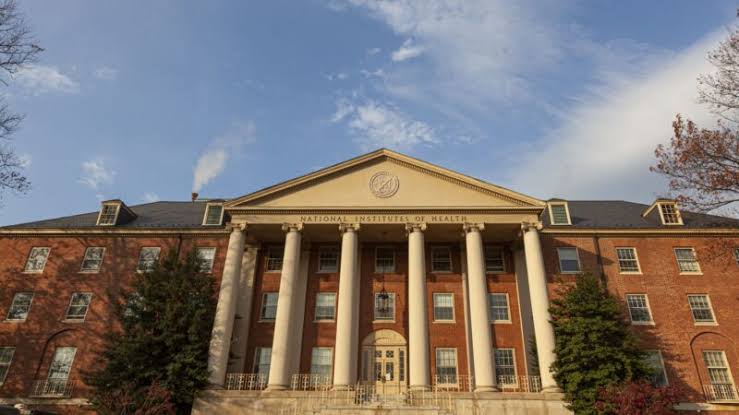The federal government has funded more than a billion dollars in biomedical and public health research at Maine institutions over the past 10 years, supporting research on everything from cancer and addiction to muscular dystrophy and Alzheimer’s disease. The vast majority of that funding comes from the National Institutes of Health, the 138-year-old Bethesda, Maryland-based agency and one of the largest biomedical research institutions in the world. Since 2015, the NIH has awarded more than 1,500 grants totalling more than $1.03 billion to some of Maine’s most venerable research institutions, including the Jackson Laboratory and the Mount Desert Island Biological Laboratory, according to a Maine Monitor analysis of federal data. While the U.S. Centers for Disease Control and Prevention and the U.S. Food and Drug Administration have also supported research in Maine to the tune of $23.3 million and $4.3 million, respectively, during the same time period, the NIH is perhaps the most prolific supporter of biomedical research and innovation in Maine.
But as the Trump administration cracks down on what it calls “wasteful spending,” the future of this scientific work remains unclear. Already the NIH driven by the new Department of Government Efficiency, or DOGE has canceled hundreds of grants, leaving research labs and public health departments across the country scrambling. The fallout from these cuts at Maine institutions, which in addition to JAX and MDIBL, include the MaineHealth Institute for Research, the South Portland-based National Partnership for Environmental Technology Education, several of Maine’s colleges and universities and more, remains to be seen. The situation at the federal level is changing by the minute, leaving scientists in a state of anxiety and uncertainty, said Dr. Elisabeth Marnik, MDIBL’s science outreach director. “Pretty much everyone in science,” is anxious, Marnik said. “This is also true at our institution but it’s not unique to our institution, and that is because NIH is the largest federal funder of biomedical research in the world.” There is “no replacement” for the NIH’s investment, Marnik said. While MDIBL has so far been spared from the Trump administration’s cuts, seeing the sudden cancellation of grants and programs at other institutions has left MDIBL researchers in a situation “where we don’t really know what to expect in an hour, or tomorrow, or in a week from now or in a year from now,” she said. “It is very scary, I would say, to be a scientist in the U.S. right now,” she said. A closer look at the research In an effort to understand the significant role funding from the NIH, CDC and the FDA has for Maine, The Monitor compiled data on every grant the three institutions awarded over the 10 fiscal years starting in 2015 and ending in 2024. JAX received an outsized portion of the federal dollars awarded in Maine. Over those 10 years, the NIH awarded JAX more than 1,000 grants totalling $706 million for 285 research projects. That was more than five times that of the sum total awarded to the next-highest recipient, MaineHealth’s research arm. After MaineHealth (which also received a nearly $250,000 FDA grant), MDIBL, the University of New England, and the Maine Department of Health and Human Services received the most funding. The entirety of DHHS’s $22.1 million in funding came from the CDC, and the bulk of it was awarded in 2015 for a series of public health emergency preparedness grants.
Of the 10 research projects that received the most funding over that time period, six were based at JAX and two each were based at MDIBL and MaineHealth. The projects range from understanding the genetic makeup of mice, which are key to the study of a wide range of diseases, to research on muscular dystrophy and cancer. The funding also supported building a statewide biomedical research network that is especially critical to early career scientists. Training the next generation of scientists The Maine IDeA Network of Biomedical Research Network, or INBRE, is based at MDIBL and is supported by an NIH program established in 1993 to broaden opportunities for biomedical research. Led by MDIBL, INBRE consists of 17 institutions across the state, from the Southern Maine Community College to the University of Maine Farmington. “This type of grant is in existence to help build up a research infrastructure in the state of Maine,” Marnik said. One way it does that is by providing money for new faculty to start pilot projects. In order to be competitive for many NIH grants, scientists must have a certain level of preexisting research, so this provides them with crucial support for their early research. Another way is by providing undergraduates across the state with research training experiences, Marnik said. “Those are really important and really key for hopefully sparking an interest in science in these students, and then also showing them that they could choose to stay in Maine – that there is this ecosystem in Maine that enables them to get their undergraduate degree here, go on to get further degrees if they want to, and then work in jobs in the state of Maine,” Marnik said. Maine has an aging population and a workforce shortage that particularly affects scientific fields requiring more specialized training, Marnik added. “We really need to have a system in place to train the next generation of scientists, but then also make it attractive to come to the state of Maine,” Marnik said, explaining that this is what makes the INBRE grant so important. The Maine INBRE project received nearly $37 million in NIH grants over the past 10 years, the third most of any project, and more than $89 million since 2001. Mouse models pivotal to biomedical discoveries Three of the highest funded projects study mouse genes and are based at JAX. The Knockout Mouse Production and Phenotyping Project, or KOMP2, at JAX, the nearly 100-year-old Bar Harbor institution that pioneered the use of mouse models in biomedical research, received more funding than any other project over the past 10 years. Between 2015 and 2024, KOMP2 received $42.4 million in grants. The project “seeks to create an encyclopedia of gene function for the ~20,000 genes in the mouse and to ultimately create a resource for understanding gene function in humans,” according to the project abstract.


